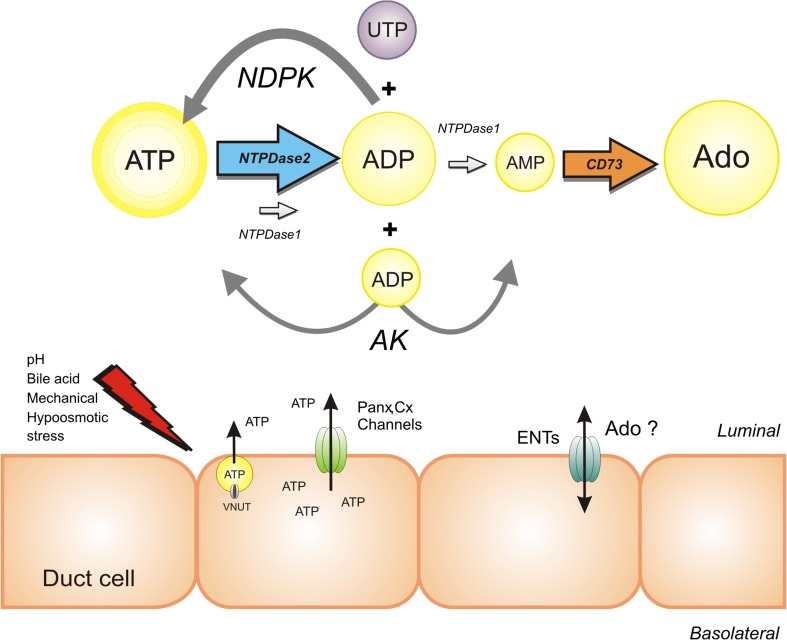Fig. 10.
Proposed model of purinergic signalling cascade in Capan-1 cells. Capan-1 cells release ATP in response to several stimuli via vesicular and non-vesicular pathways. Subsequent, released ATP can possibly be hydrolysed by NTPDase2 (ENTPDase/ATPase) to ADP; ADP concentration seems to be high and relatively stable due to a very low activity of NTPDase1 (ENTPDase/ADPase). Capan-1 cells express functional CD73 characterised by relatively high activity. In addition, high extracellular adenosine concentration was detected, which most likely does not originate from ATP hydrolysis but could be mediated by ENTs. The presence of extracellular ADP and UTP, possibly released from the pancreatic cells, may increase the extracellular ATP in reaction catalysed by highly active NDPK. Alternatively, ATP could be generated from ADP via a reverse reaction catalysed by AK. The sizes of letters indicate predicted purine concentrations and arrows indicate detected activities of enzymes. Following abbreviations are used: nucleoside triphosphate diphosphohydrolase 1,2 (NTPDase1, 2), ecto-5′-nucleotidase (CD73), nucleoside diphosphate kinase (NDPK), adenylate kinase (AK), pannexin-1 (Panx), connexin chemichannels (Cx) and equilibrative nucleoside transporters (ENTs)

